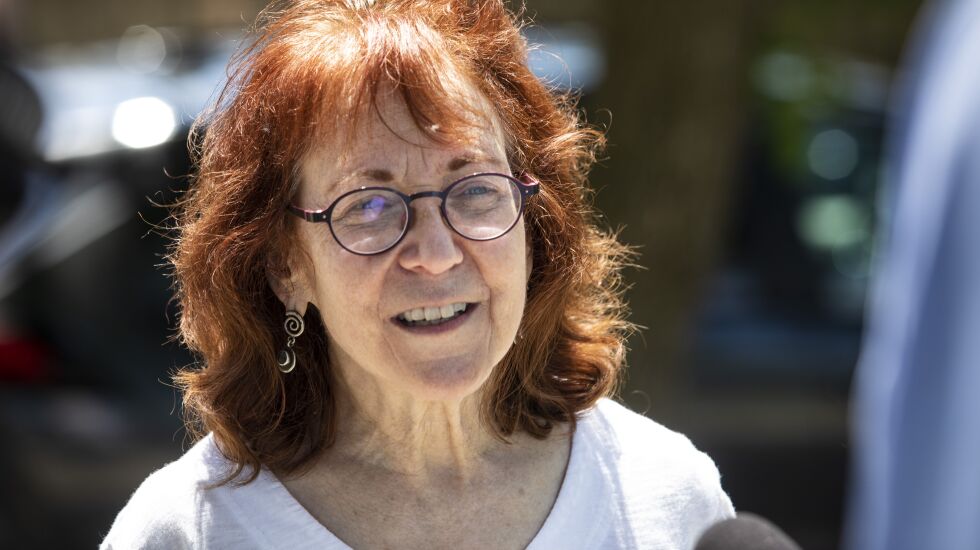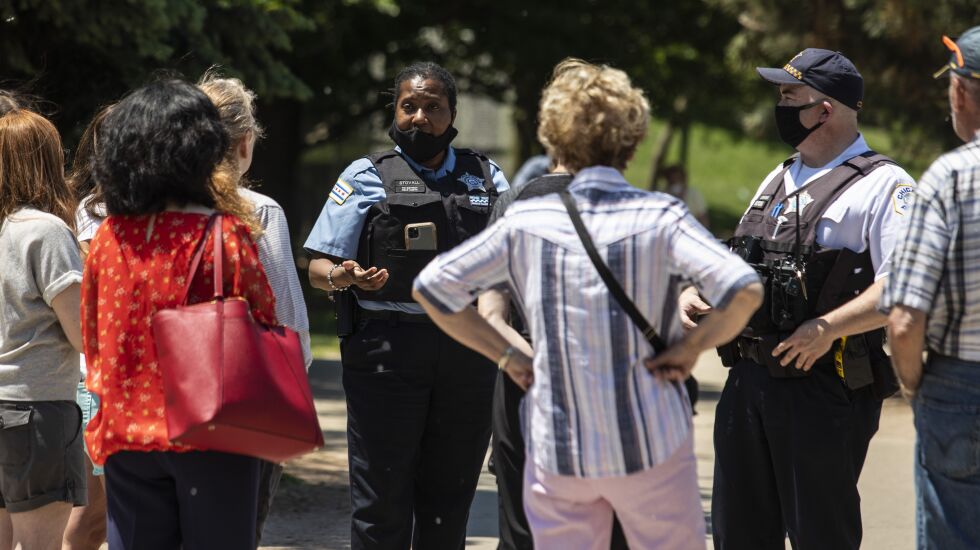
The Chicago Park District’s security camera program is under fire by parks advocates and some Chicago City Council members, who say they are costly but worthless as a deterrent to crime in neighborhood parks.
Some city officials say the cameras, which parks employees rarely monitor, are below the standard needed to be tied into city Office of Emergency Management and Communication systems.
In some cases, neighborhood residents were encouraged by parks officials to raise thousands of dollars to buy the surveillance equipment but say they can’t get answers about why they aren’t working.
“We really wish the park district had explained to our neighbors what the limitations of the cameras were,” said Ald. Michele Smith (43rd), who said she tried for weeks to get footage from the $5,800 camera system in Lincoln Park’s Oz Park. “They certainly would not have gotten it under those circumstances.”
“We’re only a half step above not having them,” said Anthony Porfirio, president of the Haas Park advisory council, where eight cameras were installed in the park’s $4 million fieldhouse in 2011.
In April, the Better Government Association reported that most of the nearly 90 park district cameras are in affluent neighborhoods that have the least amount of crime, like Oz Park, and few are in parks with the most reported crime.
Michele Lemons, a spokeswoman for Rosa Escareño, Mayor Lori Lightfoot’s parks superintendent, wouldn’t say how the cameras are monitored or answer other questions about the security program but asserted that the “surveillance cameras are monitored to detect and address activity that might compromise park safety.”
In all of 2021, one crime — a simple battery — was reported at Oz Park, police records show. But a neighborhood furor over security ensued after a June 1, 2021, shooting nearby in which the police said a 17-year-old boy fired into a group of other teenagers standing in the 2000 block of North Burling Street in the parking lot of Lincoln Park High School, wounding another teenager in an arm. The 17-year-old was charged with aggravated unlawful use of a weapon and two additional felony charges, records show.
After the shooting, neighbors began doing “safety walks’’ and called on city officials and police to increase foot patrols around the 21-acre park.
“It scared a lot of the adults,” said Shannon Waterfield, who often visits Oz Park and whose two children attended Lincoln Park High School. “They think twice about going there now.”

Smith said she began asking Chicago Park District officials about the operations of the camera overlooking the Oz Park playground after the shooting. The two cameras were installed in 2019, after neighbors hosted a fundraiser.
Smith said she never got any of the surveillance footage despite trying several times by phone and email to reach the park district’s security office.
“Having a park district camera was not worthwhile at Oz Park,” Smith said. “It was not easily accessible to look at events as they were occurring or even afterwards.”
Smith said the camera isn’t regularly monitored by park district employees and that it isn’t of high enough resolution to be looped into the Office of Emergency Management’s cloud of security footage.
She and parks advisory council members said 18th District police officials told them the camera system isn’t good enough to provide real surveillance. Smith said she is considering using discretionary funds to buy and install an OEMC camera that can be looped into the city’s surveillance network.
Oz Park advisory council president Judy Johanson, who championed the campaign to bring security cameras to the park, said the community was duped. Johanson said she was advised by the park district’s recommended camera vendor to buy two Honeywell Ball Cameras. Had she known of the problems, she said, she wouldn’t have bought them.
“I wish someone told us,” she said.
On the Near West Side, Ald. Byron Sigcho-Lopez (25th) said he faced a similar lack of communication from parks officials regarding Fosco Park.
“There is an extreme lack of coordination from the park district on security measures,” Sigcho-Lopez said.
Ahead of summer programming, Sigcho-Lopez said he tried to coordinate with the park district’s security team, but his requests were ignored.
The BGA reported in April that the park district repeatedly cited a lack of money to deny requests to put cameras in largely Black and Brown neighborhoods with higher levels of reported crimes in 2021. Since 2013, the district has installed nearly 90 cameras at 16 parks, most in more affluent, heavily white neighborhoods with far fewer reported crimes — including Fosco and two other parks where no crimes were reported last year.
Sidnee King is a reporter for the Better Government Association.







